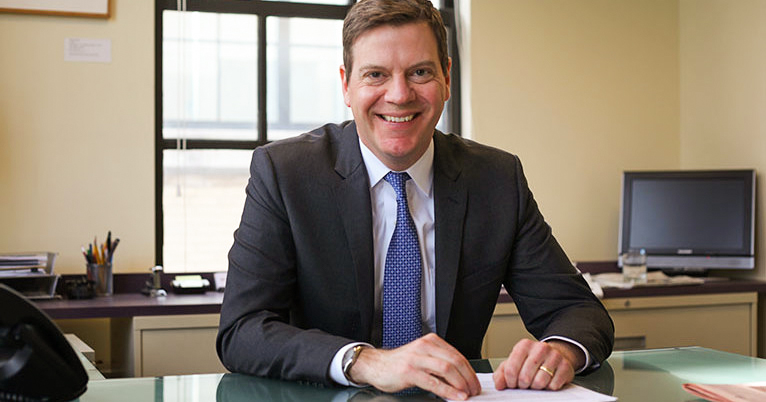
Yale News
The Yale Corporation is looking to strengthen and expand University communications to reach a larger audience, according to administrators interviewed by the News.
The Corporation met on Dec. 14 to discuss — among several other topics — ways in which the University can streamline communications. While the updated communications plan has a goal of facilitating a more efficient exchange of information throughout the Yale community, Vice President of Communications Nate Nickerson and University President Peter Salovey said that another major focus of the Office of Public Affairs and Communications is to better communicate Yale’s mission off campus.
“For communications at Yale, we’re here to serve the overall mission of Yale University, which is to improve the world,” Nickerson told the News in an interview. “In other words, we’re not communications people who are serving up advertisements, we’re doing it in service of a mission.”
Nickerson outlined major targets for updated communications, including the existing Yale community alongside potential future members of the University.
He added that another target is those who may never be part of the community but may still have an impact on Yale from afar, citing an extreme example of Senators or members of Congress. If a senator were hypothetically deciding to vote on whether or not to enact an endowment tax on educational institutions like Yale, that senator’s vision of Yale could potentially affect the outcome of that vote, he said.
“When that senator is taking a vote, she’s got in her head something about what Yale is all about, what Harvard’s all about, what other big universities that have large endowments are all about, and we have [a] real interest in her understanding what we are all about,” Nickerson said.
He emphasized the role that audience research will play in the University’s plan, based around two types of media — University-owned media, which Yale dispenses, and earned media, which refers to all other communications channels through which Yale appears. According to Nickerson, OPAC will collect user data — such as the websites visited, how much time viewers spend there and “open rates” for digital communications — in order to better target their owned media.
Nickerson added that beyond just data, OPAC also plans to send out surveys and organize focus groups to better analyze public feeling toward Yale and the communications it sends.
Salovey told the News that communications are especially important in an age of swift information exchange. When he first arrived at Yale, he said, the Yale story “told itself.” Now, an active communications campaign is necessary to ensure that Yale remains a common name within news feeds.
“If you don’t figure out a way to tell Yale’s story in a compelling but honest way, it won’t tell itself,” Salovey said. “People will just have no idea what’s going on.”
Salovey added that while the Corporation largely endorsed the communications plan, “like good trustees, they’re going to be interested in results.”
Some University efforts are already underway, Nickerson said. Recently, OPAC launched Yale Today, a daily email presenting news about the University. While weekly emails began ten years ago and become biweekly three and a half years ago, Nickerson told the News, a daily newsletter allows the University to communicate the breadth of its offerings and innovations.
Earlier this month, OPAC launched a new podcast called Yale Talk, which will feature monthly conversations between Salovey and a guest. The podcast replaced Salovey’s online newsletter, called the Notes from Woodbridge Hall.
Nickerson added that within the next month, OPAC will begin to analyze data to better understand reactions to its owned and earned media. A couple of months after that, he said, the University will begin launching focus groups to gather more information from the campus community.
According to University spokesperson Karen Peart, she and other members of OPAC will use the data they collect to refine their sense for which types of stories generate enthusiasm about Yale.
“The whole staff is energized by Nate’s arrival and his vision for promoting the university’s teaching and learning,” Peart wrote in an email to the News.
OPAC is located at 2 Whitney Avenue.
Valerie Pavilonis | valerie.pavilonis@yale.edu







